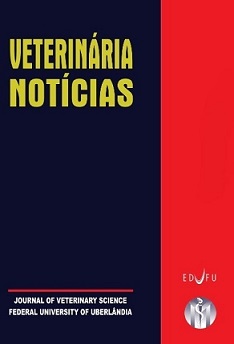Effects of size and apical or basal portions of the tiller on the morphology of elephant grass
Palavras-chave:
Colmo, folha, Pennisetum purpureum, senescênciaResumo
This work was developed to evaluate the effects of the size and the apical
and basal portions of the tiller on the morphology of elephant grass
(Pennisetum purpureum cv. Napier). Two experiments were performed. In
the first one, the characteristics were evaluated of basal tiller with four
sizes (80, 120, 160 and 200 cm). A completely randomized design was used,
with three replications. In the second experiment, the morphology of the
basal and apical portions, from small tillers (100 cm) and large (180 cm)
elephant grass were evaluated. The design was completely randomized
and the split-plot scheme was used, with three replications. The numbers
of living and dead leaves, stem and leaf lengths, leaf blade width, and
tiller mass increased linearly with elephant grass size. The basal portion
of the elephant grass tiller had a higher mass (56.2 g), higher percentages
of leaf dead (2.1%) and live stem (89.5%), and a lower percentage of live
leaf blade (23.4%) than the apical portion. With the increase in size, the
elephant grass tiller presents a higher percentage of structural tissues and
with a higher stage of development, as well as a lower percentage of
photosynthetic tissues. The apical portion of the elephant grass tiller has a
higher percentage of photosynthetic tissues and a lower percentage of
structural tissues and a higher stage of development compared to the
basal portion of the tiller.

